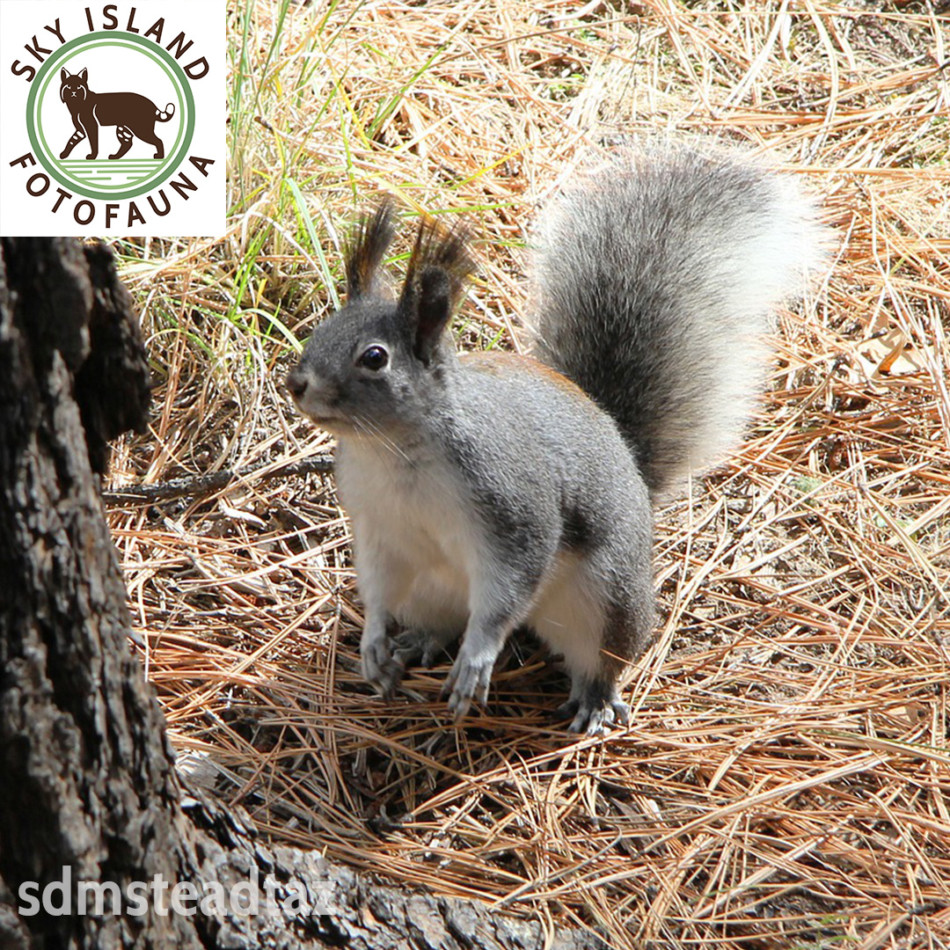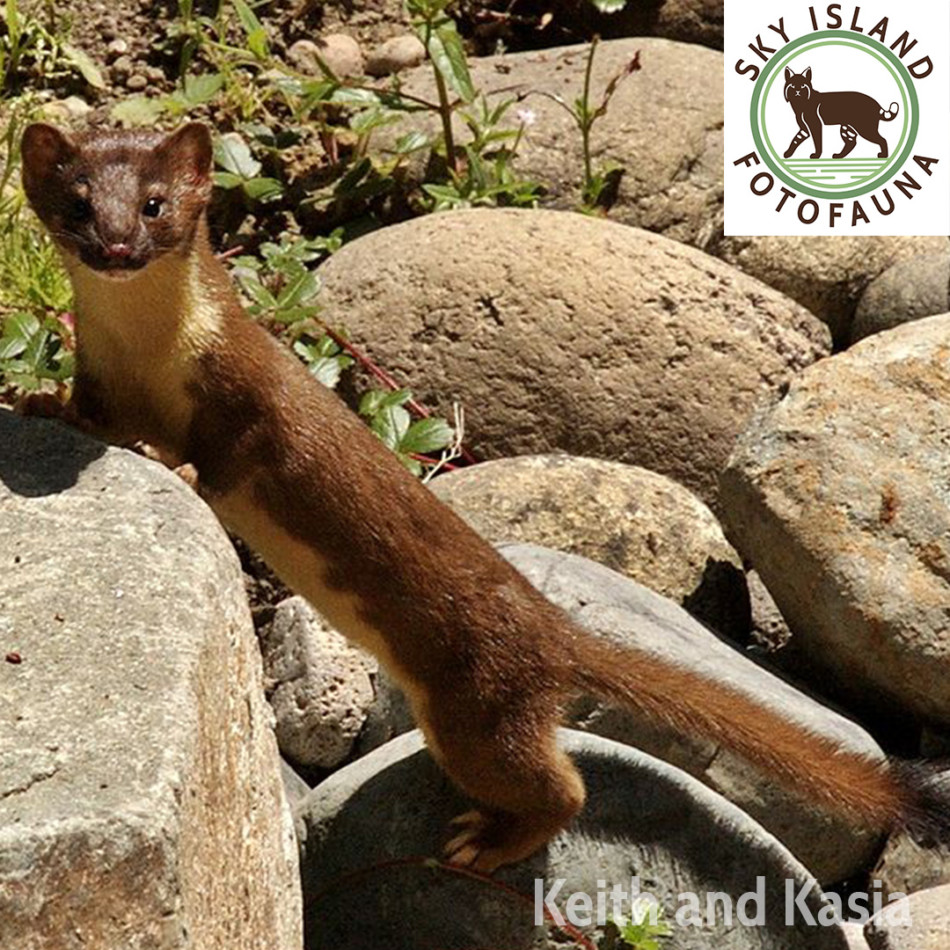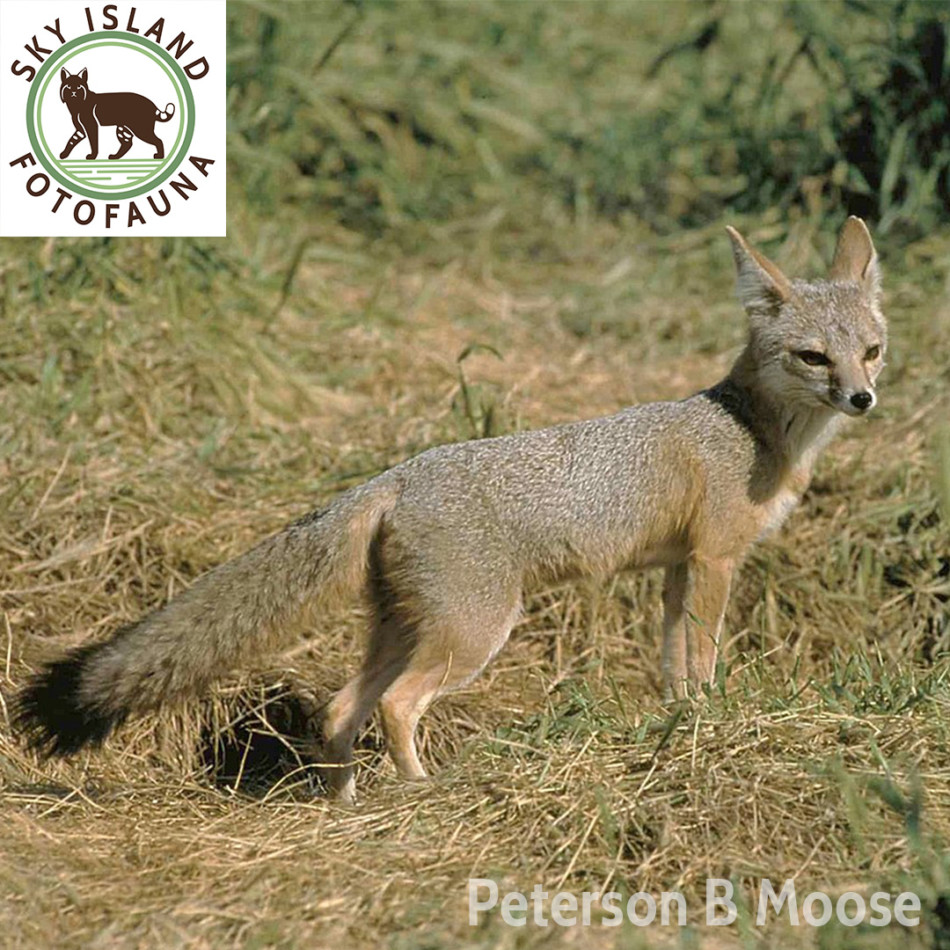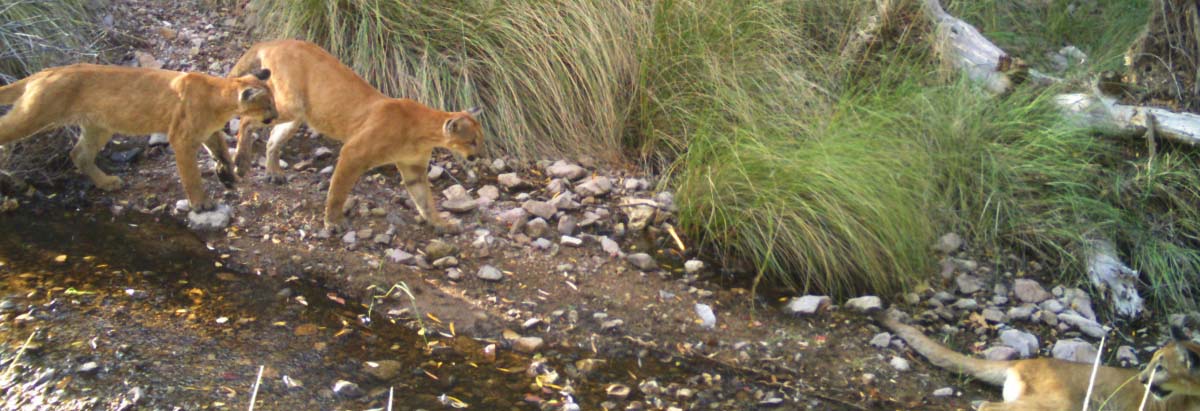What does the data submitted through FotoFauna tell us about wildlife in the Sky Island region? Use the interactive dashboard embedded below (also viewable in full screen) to explore results from this project by species, location, and camera site — and see what kind of wildlife have been detected near you. If you have questions, feel free to email our Wildlife Projects Manager Eamon Harrity.
- FotoFauna Home
- Getting Started
- Project Results & Trends
- FotoFauna Dashboard
- Species Gallery
- FotoFauna FAQs
- Species ID Resources
- Support a FotoFauna Camera
The Data So Far
Since launching the FotoFauna project in October 2020, volunteers and partners have contributed more than 3,000 checklists from hundreds of unique locations in the U.S. and Mexico. These data provide a new window for us to look at the diversity and distribution of mammals and select bird and reptile species in the Sky Island region.
Each checklist confirms the presence or absence during a given month of 43 species (plus other birds, bats, and reptiles) at a trail camera location. By expanding this network of cameras across the region and collecting more checklists over time, communities in this region — from Tucson, Arizona, to Hermosillo, Mexico — can deepen their understanding of the wildlife present in their neighborhoods and use this info to guide local conservation actions.
With the first two years of data in hand, we now know:
- The most commonly recorded species on submitted monthly checklists are:
- Coyote (Canis latrans) with 1030 records
- Javelina (Pecari tajacu) with 867 records
- Cottontails (Sylvilagus spp. both desert and eastern combined) with 749 records
- Bobcat (Lynx rufus) with 677 records
- White-tailed deer (Odocoileus virginianus) with 608 records
- All four cat species — jaguar, mountain lion, ocelot, and bobcat — have now been detected by at least one camera in our FotoFauna network;
- FotoFauna cameras near water have detected 40 wildlife taxa, while FotoFauna cameras not near water have detected 35 wildlife taxa;
- Across the FotoFauna network, more than 41 wildlife taxa have been documented out of 47 total taxa on the checklist. See the section below on “Most Wanted Species” for the taxa we’re still waiting to detect;
- Within the greater Tucson area, FotoFauna cameras have detected 28 wildlife species, including badgers, ringtails, and all four kinds of Sky Island skunks.
Dashboard Guide
Here are a few tips for exploring the FotoFauna Dashboard (also viewable in full screen).
- Expand the dynamic data figures around the map by clicking on the upper right corner of each panel (the circle with four arrows pointing outwards).
- View the map legend or change the basemap by clicking the icons on the upper right corner of the map pane.
- Zoom into specific locations on the map by hovering over the map and scrolling down (scroll up to zoom out).
- Click and drag the map to move the field of view eastward (drag left), southward (drag up), westward (drag right), or northward (drag down).
To View Data by Species
Use the FotoFauna Dashboard to see which species are seen most often across the camera network and where they are present on the map (by clicking one or more purple species bars on the bottom graph). The species displayed on the species frequency figure scales to the map extent so as you zoom in; the combination of species shown and the number of records of these species reflects the area in view.
To View Data by Camera Site
Click on a camera location to see the total number of species observed in that location, the months of checklist data available, and the extent to which influences of people, domestic animals, livestock, or vehicles affect this location. Note that each location is approximate to protect privacy, so the actual camera location is within 1,000 meters of the displayed point.
If the camera-location marker is blue, the camera is within 15 meters of drinkable water for a majority of the months reporting. If the camera location is yellow, the camera was not within 15 meters of drinkable water for the majority of the months reporting. The size of the camera-location marker scales with total species richness, so larger markers indicate more species observed at that location.
To View Data by Locale
Explore the wildlife richness of different neighborhoods by zooming into locations on the map or clicking on a locale (green bar) on the figure to the right of the map.
Watch: How to Use the FotoFauna Dashboard
Most Wanted Species
Here are the species we have not yet detected through the Sky Island FotoFauna network. If you have seen any of these species in your area, consider joining FotoFauna to add your data to our dashboard!








